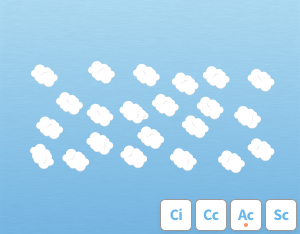

FLUCTUS CLOUD SOFTWARE
They form at an altitude between 6 and 12 km above the Earth’s surface and consist of ice crystals. Since Fluctus is a truly open infrastructure, there’s no need to worry about hardware or software constraints. These were observed over Stavanger in November 2018.Ĭirrus clouds may look like feathers. The pattern can occur on several types of cloud: Cumulus, Stratuscumulus, Stratus, Altocumulus and Cirrus. (Free, but you need to register.) World Meteorological Organization Cloud Atlas - Fluctus Clouds. The wind forms a wave-like pattern on the top of the clouds. It was observed at 9:58 pm, from Våland in Stavanger,looking towards Tau.įluctus clouds and Kelvin-Helmholtz clouds are very rare.

This Cumulonimbus cloud caused a powerful downpour on. Stratus clouds can be associated with two cloud features: fluctus and praecipitatio. Stratocumulus clouds have six supplementary features: asperitas, cavum, fluctus, mamma, praecipitatio, and virga. The top of a cumulus cloud often looks like cauliflower. On good-weather days they break apart at a higher altitude. In Norway’s latitude, this type of cloud can be 14,000 metres tall, while in tropical regions it can rise to 20,000 metres.Ĭumulus clouds form near the ground and rise with the temperature. Fluctus Cloud - Album by Jiren Rinx Spotify Home Search Your Library Create Playlist Privacy Center Cookies Cookies Preview of Spotify Sign up to get unlimited songs and podcasts with occasional ads. The thunder cloud (cumulonimbus) is the highest cloud and can extend through all the three levels. Some clouds exist within only one altitude, while others can move between several altitudes. In polar and tropical regions, the altitude levels are a bit different.

Clouds are classified according to the same method as are plants and animals.Ĭloud types are categorised according to their appearance and location in the atmosphere.
FLUCTUS CLOUD PLUS
There are nevertheless ten main categories of clouds, plus many sub-categories and variations. The Eastern iwan of Jmeh Mosque of Isfahn in Isfahn city, Iran (Image: Amir Pashaei CC BY-SA 4.0 ). The ceiling of this incredible Persian mosque is surely too close to the formation of a Lacunosus cloud to be a coincidence. A single cloud is a rare occurrence in the sky, it can be difficult to say exactly what type of cloud it is. Fluctus clouds, also known as Kelvin-Helmholtz clouds, spotted over Cumbria, England by John Knowles (Member 10,984).


 0 kommentar(er)
0 kommentar(er)
